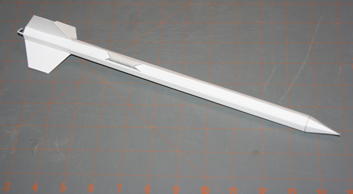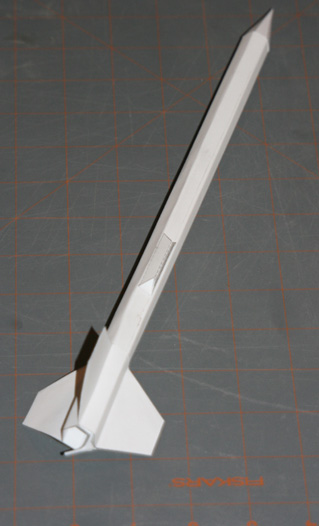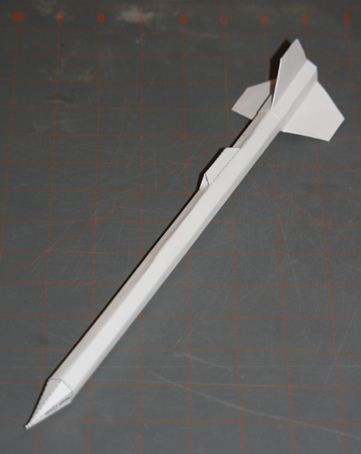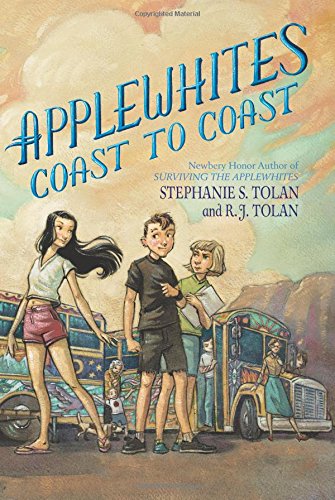Art Applewhite Rockets 13mm Six (Plan) Plan
Art Applewhite Rockets - 13mm Six {Plan}
Contributed by Todd Mullin
| Construction Rating: | starstarstarstarstar_border |
| Flight Rating: | starstarstarstar_borderstar_border |
| Overall Rating: | starstarstarstarstar_border |
| Diameter: | 0.60 inches |
| Manufacturer: | Art Applewhite Rockets  |
| Style: | Paper |
Brief: The Six is another great free downloadable paper rocket available from Art Applewhite Rockets. It is a 13mm streamer or tumble recovery model that requires some fairly good craftsmanship skills. If you have never tried to construct a paper model (or fold origami) you might be better off starting with another one of Art's free download.
The Six is another great free downloadable paper rocket available from Art Applewhite Rockets. It is a 13mm streamer or tumble recovery model that requires some fairly good craftsmanship skills. If you have never tried to construct a paper model (or fold origami) you might be better off starting with another one of Art's free download.
Construction:
There are very few materials required to build this rocket. The pattern is printed on 110lb card stock or poster board. Also required are:
- 24" of 1/8" elastic cord
- 2 paperclips
- streamer material
- cellophane tape
- 5 minute epoxy
- an x-acto with a new blade
- metal straight edge
- white glue
The first page of the instructions gives tips for building paper models and makes recommendations about where to purchase your building supplies.
 On the next page actual construction begins. As with most rockets, this starts with the motor mount. For this plan, it is cut out and folded into a six sided box that is partially closed on the front end. Next one of the paper clips is bent into the hook pattern provided on the plans and glued to the mount.
On the next page actual construction begins. As with most rockets, this starts with the motor mount. For this plan, it is cut out and folded into a six sided box that is partially closed on the front end. Next one of the paper clips is bent into the hook pattern provided on the plans and glued to the mount.
The fin can is next to be assembled, though I use this term loosely as it is only one piece! This fin can is a work of genius. By scoring and folding as directed, the flat pattern is transformed into a three-fin fin can without making any cuts in it! After folding and gluing, the fin can is slid over and glued to the motor mount.
The body tube is cut out next. The shock cord mount and launch lug are integral to the body tube. The shock cord is woven into the mount with a tab glued in place over top of it.
After attaching the shock cord to the body tube it is set aside to dry and the two part nose cone is cut out and assembled. The cone is a sharp, angular conical design. The shoulder is formed into a six sided box that is tabbed on the top. After folding each section, the shoulder is glued into the cone. To complete the assembly of the nose cone, it is filled with 5 minute epoxy and gets the other paperclip inserted into the epoxy to anchor the shock cord. This set must be done as it provides the nose weight required for the model to be stable.
The body tube is probably the most challenging part of the build. The directions should be read through and followed carefully. After the part is cut out, it must be carefully scored and folded with a straight edge. Getting perfectly straight folds that aren't rippled can be a challenge. Luckily, if you goof you can always print another body tube out! The body tube is then fit and glued to the fin can, the streamer is tied to the shock cord and the shock cord to the cured nose cone and construction is complete!
Finishing:
The only finishing recommended in the instructions is an optional coating of the body tube and fins with CA glue to stiffen them. After this, shoot a couple of coats of clear enamel on the rocket to protect it from moisture if you want. On my original model, I didn't do this as San Diego usually isn't too damp. Coloration of the model can be done by printing the patterns out on colored paper, so no painting is required!
Construction Rating: 4 out of 5
Flight:
The bent paperclip motor hook works well and inserting the motor is easy. I packed a bit of dog barf wadding went in before the streamer and the Six is ready to go!
The A10-3T is one of my favorite motors, so I always have a good supply of them in my motor box. The Six really gets up and moves on this motor. Without a fairly large flying field, this will probably be too much motor for this small lightweight rocket. The boost was nice and straight, weather cocking slightly towards the top.
Recovery:
For the first flight, the streamer deployed perfectly. I then gave the Six to one of the 4H kids that I was flying with as she had lost her rocket. She got an additional two flights on the airframe. On the last flight, she probably packed in too much wadding or didn't fold the streamer tight enough. The nose cone failed to deploy on the flight and the model got a few extra folds in the body tube when it hit the ground. The body tube is fairly tight and can be challenging to get the recovery system installed correctly.
Flight Rating: 3 out of 5
Summary:
Overall, you get a great little rocket from this set of plans if you work carefully and take your time. As the materials required to build the Six are extremely inexpensive you can build an entire fleet of them for a couple of dollars. This is not a beginner's rocket but it doesn't take a rocket scientist either. Probably not a great choice for small children but it would be okay for older kids with some papercraft experience. While I didn't make any flights on the smaller recommended motors, the 1/2A motors should give you a good flight.
Overall Rating: 4 out of 5

Other Reviews
- Art Applewhite Rockets 13mm Six (Plan) By John Lee (July 11, 2008)
My NAR section will soon be doing a "Make and Take" session at a local museum for kids. We are limited to an extremely small launch area surrounded by lots of big, rocket eating trees. Art Applewhite was kind enough to allow us to build a bunch of his Qubits (with special artwork) for the kids. I also wanted to launch a few other things but not anything that would pain me greatly to lose. I ...
 |
 |
Flights
Sponsored Ads
 |
 |



![Calling Marshall Applewhite [Explicit] Calling Marshall Applewhite [Explicit]](https://m.media-amazon.com/images/I/51MeUaBWTkL._SL500_.jpg)







